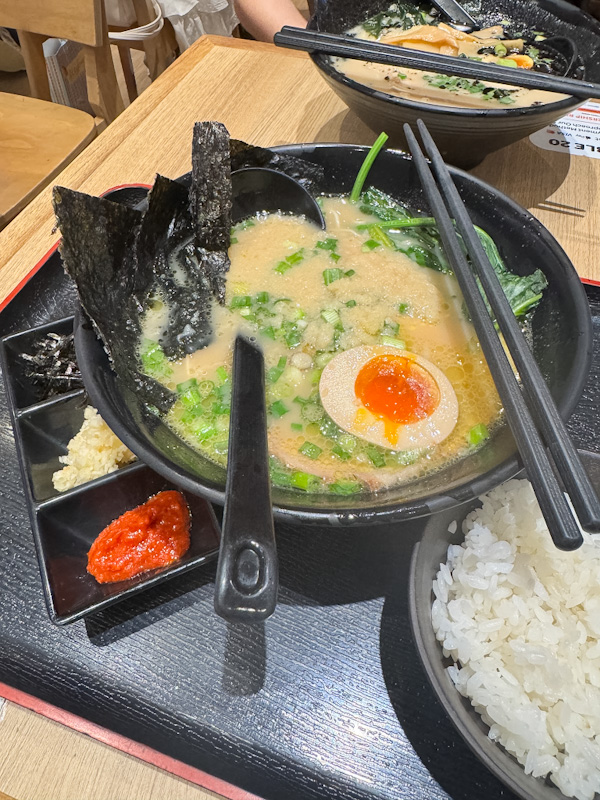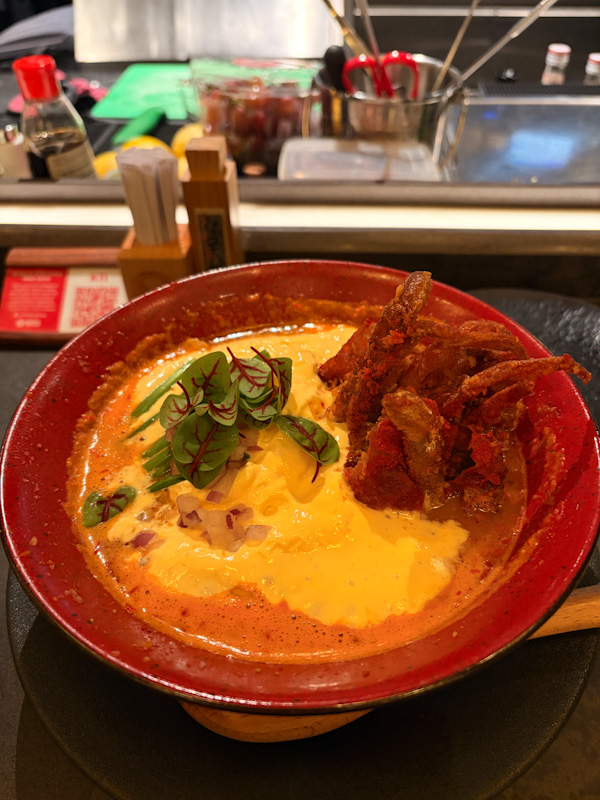WHAT WE ATE
- Truffle Ramen, 50/100 (BreadTalk IHQ, 14 Oct 2023)
- Toroniku Uobushi Ramen, 65/100 (BreadTalk IHQ, 14 Oct 2023)
- Grand Tonkotsu, 50/100 (NEX, 24 Aug 2022)
- Tamago Tonkotsu, 35/100 (NEX, 24 Aug 2022)
While there is no official confirmation, there is a widespread belief that Sō Ramen was formerly known as Ramen Play. However, the veracity of this claim is inconsequential, as it has been such a considerable length of time that it is unlikely anyone can recall what Ramen Play even tasted like.




TRUFFLE RAMEN 50/100
Noodle – 15/35
The noodles in this dish are thin and straight, reminiscent of Hakata-style noodles. While they offer a decent bite, their flavor is somewhat lackluster. They lack the robust wheat aroma and taste rather flat. However, the balanced kansui taste is a positive aspect.
Soup – 15/35
The broth serves as a very light shoyu base, perhaps a bit too light. It lacks the pronounced aroma of shoyu, offering only a subtle sweetness. Despite the addition of truffle topping, the truffle aroma doesn’t seem to infuse well into the broth. The result is a soup that lacks depth and distinctive layers in its flavor profile.
Meat – 15/20
This dish features the standard Chashu with one side seared (“aburi-ed”). The meat exhibits a firm texture with some fatty and chewy elements. The savory-sweet marination is well-balanced, and a subtle gingery aftertaste adds a nice touch. A stronger sear on the aburi would enhance the overall experience.
Topping – 5/10
Toppings include minced black truffle, seaweed, and negi. While the truffle’s aroma is quite strong upon serving, it doesn’t leave a lasting impression in terms of taste. The egg is good but is not included as part of the standard dish (you need to order it as a side).


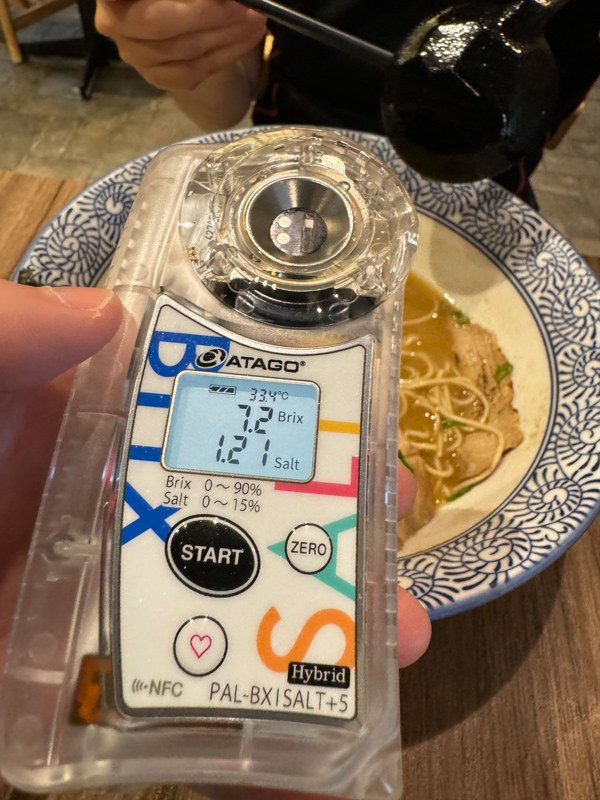

TORONIKU UOBUSHI RAMEN 70/100
Noodle – 15/35
The noodles in this dish remain consistent with the same type used elsewhere. These noodles are thin and straight, following the Hakata style. They offer a decent bite, but their flavor profile is somewhat weak, lacking the expected wheat aroma and coming across as rather flat. Nevertheless, the balanced kansui taste is a positive feature.
Soup – 15/35
This particular broth is a blend of Bonito and Tonkotsu. It initiates with the strong sweetness typical of a Tonkotsu broth and progresses into a savory umami aftertaste reminiscent of Bonito. Overall, it presents a fairly well-balanced soup.
Meat – 20/20
The standout meat choice here is Toroniku, braised pork cheeks. This meat is incredibly tender, almost melting as you lift it up. It’s marinated to perfection, delivering a savory sweetness and robust flavors that keep you savoring each bite.
Topping – 5/10
Toppings consist of seaweed, negi (green onions), and bamboo shoots. While these toppings are acceptable, none of them particularly stand out. The bamboo shoots provide a satisfying crunch with a mild pungent taste.


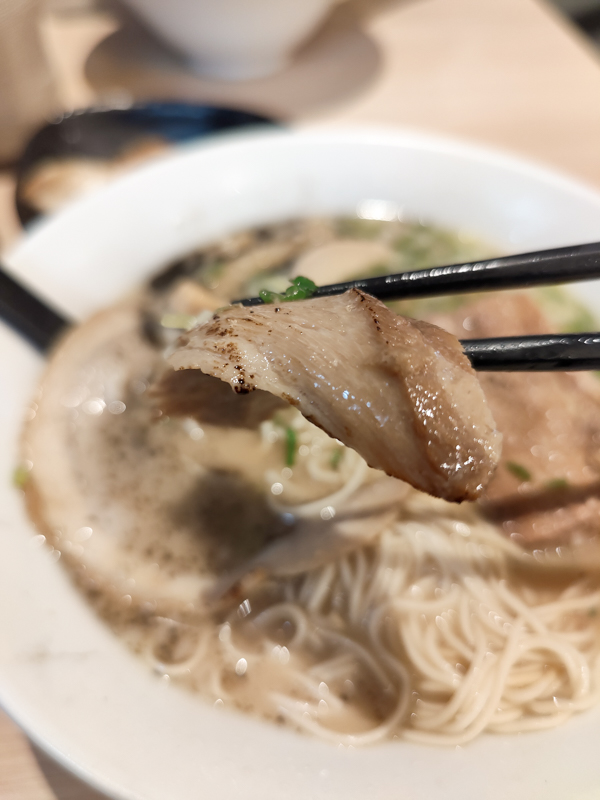


GRAND TONKOTSU 50/100
Noodle – 10/35
The thin, straight noodles used in the Grand Tonkotsu are satisfactory in taste, but unfortunately, their texture is overly soft and lacks the desired firmness. They fail to leave a lasting impression and don’t offer anything particularly exceptional.
Soup – 15/35
The overall flavor of the soup is decent, with the addition of a drizzle of black onion sauce providing a subtle sweetness. However, the consistency falls short of the classic Tonkotsu richness one would expect. Although the broth appears slightly cloudy and is not thin or diluted, it lacks the characteristic depth and richness associated with traditional Tonkotsu.
Meat – 20/20
The “Grand” version boasts a trio of meats: regular Chashu, braised pork cheeks, and a special braised pork belly. The regular Chashu is unremarkable, thinly sliced with an average taste. On the other hand, the braised pork cheeks impress with their tenderness and well-balanced marinade, offering a savory profile with hints of sweetness. However, the thick slice of special braised pork falls short in terms of texture, as it is tough and slightly dry.
Toppings – 5/10
The eggs in the Grand Tonkotsu are prepared to perfection, with a well-balanced marinade and a delightfully gooey yolk at the center. The remaining toppings, including negi (green onions) and bamboo shoots, are rather ordinary. The bamboo shoots exhibit a slight hint of pungency but remain tender enough not to overpower the overall flavor.
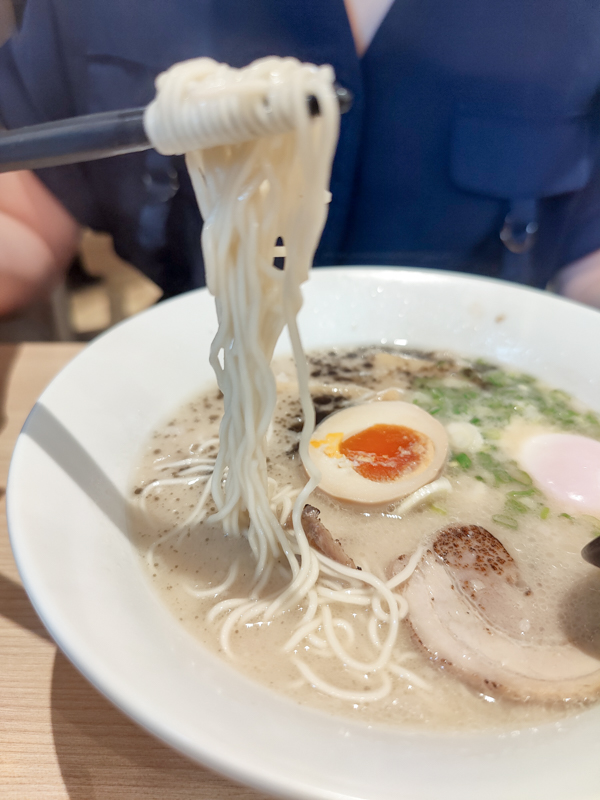

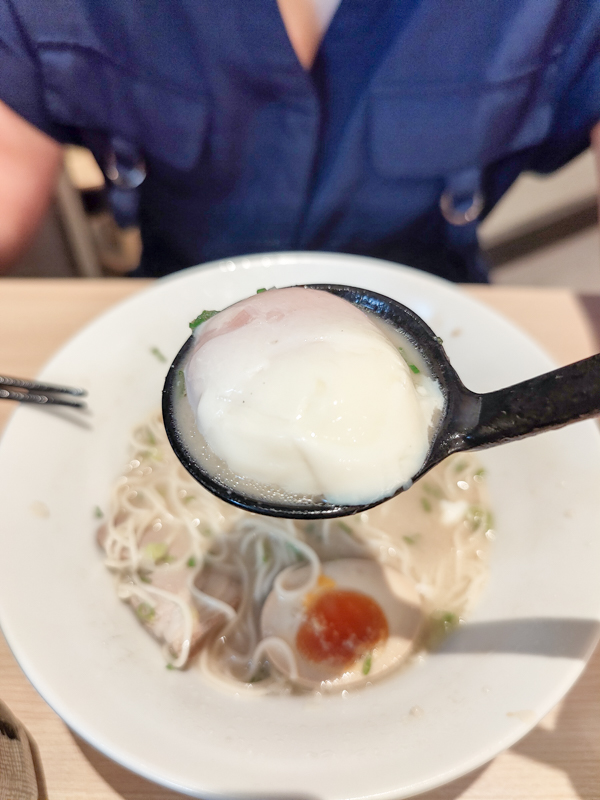

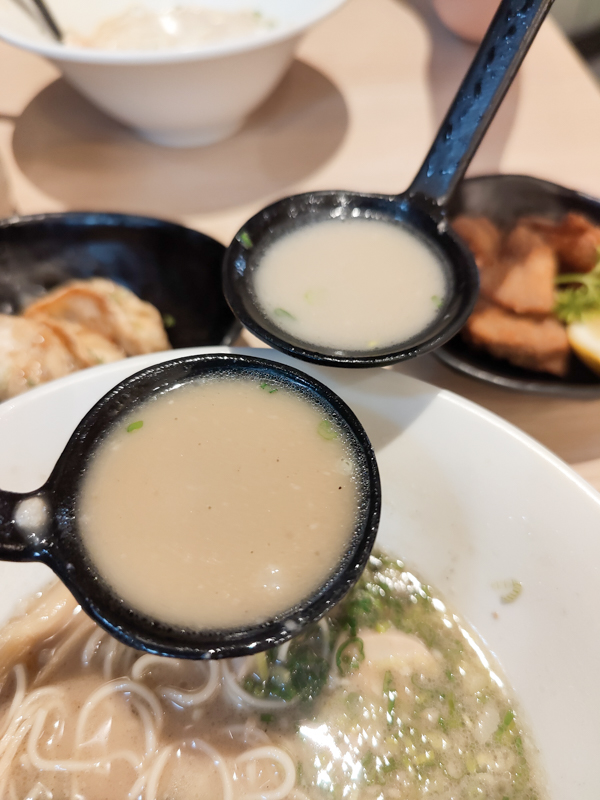
TAMAGO TONKOTSU 35/100
Noodle – 10/35
Same noodle used here and same issue with lacking bite.
Soup – 10/35
Similar thinness in consistency. While the Tamago Tonkotsu also have the black onion drizzle, the broth doesn’t taste quite the same as the Grand Tonkotsu. The difference could be due to the marination from the Chashu in Grand Tonkotsu. The broth here is a little flat and lacks complexity in its flavour. The taste of the noodles also start to become a bit more pronounced in the broth – not in a good way.
You can see from the photo comparison that the broth between the Grand Tonkotsu and Tamago Tonkotsu is quite different in colour.
Meat – 10/20
Nothing special. A little on the thin side but still taste pretty ok. Texture is on the firm side.
Toppings – 5/10
Whats special about the Tamago Tonkotsu is the extra onsen egg. Its nicely done visually and taste wise. Some negi and bamboo shoots. Same as before, the bamboo shoot has a hint of pungent-ness but overall very soft and is a decent addition.
DISCLAIMER
One man’s meat is another man’s poison.
Find out more about our palettes and how we evaluate our ramen here. 😉

